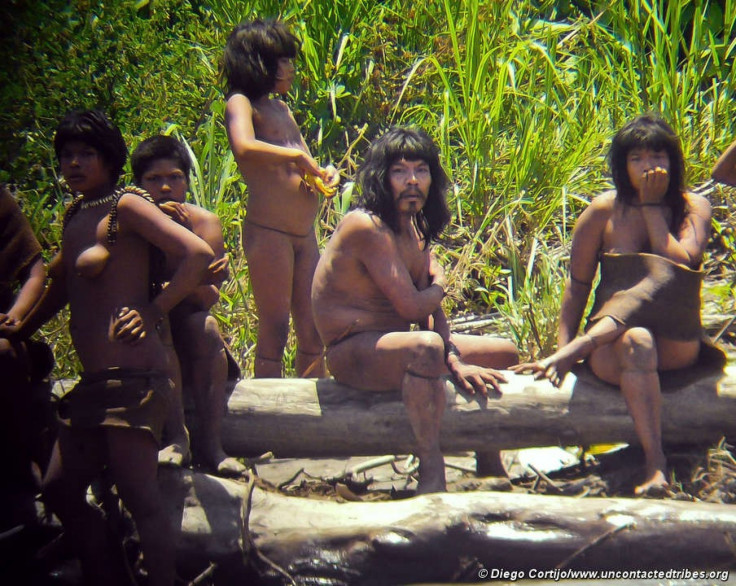Startling New Photos of Uncontacted Tribe in Peru Released [PHOTOS]

A year after aerial photos of uncontacted tribes from Brazil astounded the world, Survival International has released another set of startling closed-up photos of uncontacted Indians in southeast Peru.
The new photographs, distributed by Survival International on Thursday, show family members of the Mashco-Piro tribe observing an expedition of the Spanish Geographical Society from across the Alto Madre de Dios river in the Amazon basin of southeastern Peru. The photos were captured through a telescope by Spanish explorer Diego Cortijo on Nov. 16, 2011.
Survival International has listed the Mashco-Piro tribe as one of around 100 uncontacted indigenous tribes in the world. According to it, the Mashco-Piro tribe is known to inhabit the Manu National Park, but sightings of them have increased in recent months.
Illegal logging in and around the park and low flying helicopters from nearby oil and gas projects are blamed for forcibly displacing the Indians from their forest homes. Here is a video that shows a man of the Murunahua tribe who lost his eye when he was shot by loggers during first contact. Jorge, the man, recalls the tragedy like this:
The newly released photos are claimed to be the most detailed sightings of uncontacted Indians ever recorded on camera.
According to Survival International, the danger of contacting tribes who choose to remain isolated is very high. Recently, a man named Nicolas Shaco Flores was shot by an uncontacted tribe's arrow near the Manú National Park in Peru when he attempted to contact them.
Flores reportedly had been leaving food and gifts for a small group of Mashco-Piro Indians for the last 20 years.
Contact could happen at any time, Beatriz Huertas, a Peruvian expert on uncontacted tribes, told Survival. We must implement preventative measures and a contingency plan with local authorities as soon as possible to ensure this does not happen again.
SERNANP, Peru's Ministry for Protected Areas, closed off the protected areas to tourists and an emergency warning issued to local residents, after Survival expressed its concern to the ministry at a video, showing tourists leaving clothes for the Indians on riverbanks.
According to Stephen Corry, Director at Survival International, the new photos provide overwhelming evidence of the existence of uncontacted tribes. It is no longer acceptable for governments, companies or anthropologists to deny this, said Corry.
Survival International estimates that there are 15 uncontacted tribes in Peru. All of them live in the most remote, isolated regions of the Amazon rainforest. The tribes include the Cacataibo, Isconahua, Matsigenka, Mashco-Piro, Mastanahua, Murunahua (or Chitonahua), Nanti and Yora.
Also read: Tourism Pushing Andaman Aborigines to Tipping Point
Have a look at the photos below:
Members of the Mashco-Piro tribe observe an expedition of the Spanish Geographical Society from across the Alto Madre de Dios river in the Amazon basin of southeastern Peru, as photographed through a telescope by Spanish explorer Diego Cortijo on November 16, 2011. D. Cortijo/www.uncontactedtribes.org
Members of the Mashco-Piro tribe observe an expedition of the Spanish Geographical Society from across the Alto Madre de Dios river in the Amazon basin of southeastern Peru, as photographed through a telescope by Spanish explorer Diego Cortijo on November 16, 2011. D. Cortijo/www.uncontactedtribes.org
Startling New Photos of Uncontacted Tribe in Peru Released. G. Gali/uncontactedtribes.org
© Copyright IBTimes 2025. All rights reserved.






















